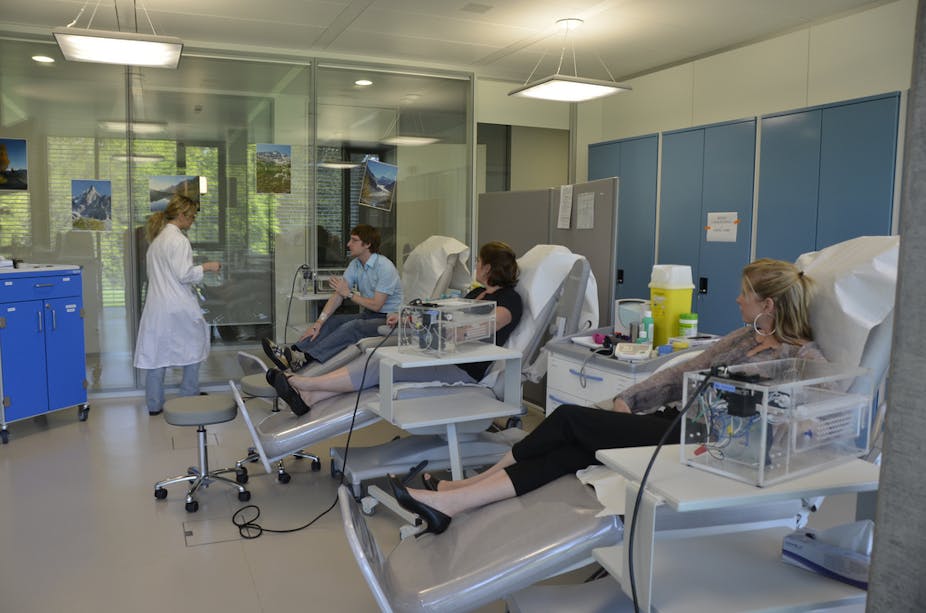New medicines are often marketed on the basis of clinical trials of limited size and duration. So clinical studies of a medicine after it has reached the market (post-marketing studies) can be a useful way to get more data on its benefits or possible adverse effects.
But a study recently published in the British Medical Journal (BMJ) shows that post-marketing studies are also often used as ploys to get doctors in the habit of prescribing new medicines that may be much more costly while not being any more effective or safer than older ones.
The example taken in this study is that of insulin analogues. Until the 1980s, insulins used for the treatment of people with diabetes were obtained from animal pancreas. Then, they were genetically engineered to reproduce human insulin. And later still, insulin analogues, which are an altered form of human insulin, were promoted as more effective and safer – but marketed at a much higher cost.

Scientific evidence on the benefits of the insulin analogues over human insulins has been consistently unconvincing. The latest review by the World Health Organization in 2011 concluded that “analogue insulins had little advantage over conventional insulins in terms of glycaemic control or reduced hypoglycaemia.”
Nevertheless, insulin analogues have taken over the market. In the United Kingdom, the total annual cost of insulin increased by 130% over a ten-year period, mainly due to the increased use of insulin analogues rising from 12% of the total cost in 2000 to 84% in 2009. The National Health Service would have saved an estimated £625 million if human insulins had been used instead of insulin analogues.
The situation is similar in Australia. The Prescribing Benefits Scheme (PBS) expenditure on insulins rose by 125%, from around $100 million in 2001 (18% of the costs on insulin analogues) to around $225 million in 2009 (81% of the costs on insulin analogues).
How did we get here?
Drug companies run intense marketing campaigns to persuade prescribers that insulin analogues are better drugs than human insulins. Marketing campaigns involve numerous tools – traditional ones such as advertising, sales representatives and “continuing medical education” but also less well-known ones such as promotional post-marketing studies, which are known as “seeding” trials.

The study in the British Medical Journal examined post-marketing studies of insulin analogues and found that they involved some 400,000 participants worldwide. One research project called A1chieve run by Novo-Nordisk, recruited 66,726 people from 3166 centres in 28 countries. Its declared objective was “to remedy the deficit of data in less well resourced/newly developed countries” but its scientific value is very doubtful because there was no well-defined research question, no comparison group and no proper recording and supervision of what the study was supposed to measure.
Participating doctors were paid for enrolling patients, and patients were likely to remain being prescribed the insulin analogues after the study finished. There were big costs involved in the long term for national insurance systems.
An accompanying editorial in the same journal points to potentially catastrophic health expenditures in poorer countries where most medicine costs are borne by patients themselves. In India, converting from human insulin to an expensive insulin analogue (such as the one used in the A1chieve study) would increase a person’s expenses by around 20% of the median annual household income of US$3000.
So what is the situation in Australia regarding promotional post-marketing studies? The Code of Conduct of Medicines Australia, the peak pharmaceutical industry body, states that post-marketing studies should “not be designed for, or conducted as, a promotional exercise”.
But, in practice, it’s very difficult to distinguish between genuine studies and merely promotional ones. We have no data on what is being done in Australian clinical settings. But there are even better marketing tools for the Australian pharmaceutical industry to use than clinical trials (which can be complex and expensive to run). These tools are called Product Familiarisation Programs (PFPs).

According to Medicines Australia’s Code of Conduct, “PFPs have the aim of allowing the medical profession to evaluate and become familiar with a product”.
Product Familiarisation Programs are conducted in the first 12 months following first supply of a newly approved medicine with no formal protocol and no individual data collected. Prescribers or pharmacists can be paid to enrol patients in the programs, and the products are provided by drug companies or reimbursed by the PBS.
One of the most extensive Product Familiarisation Programs ever conducted in Australia is being currently run by Boeringer Ingelheim, the manufacturer of dabigatran (Pradaxa®). This new drug is promoted as easier to use and safer than the widely used and cheap anticoagulant, warfarin. Specialists and general practitioners in Australia have been approached to enrol up to ten patients each in the program.
Product Familiarisation Programs can have disastrous consequences on public health and increased pharmaceutical expenditures. They can lead to the very rapid uptake of new drugs whose safety is still very uncertain and induce swapping from older drugs without medical need – but with huge costs involved. In the absence of demonstrated benefits on health outcomes, such programs should be prohibited if we want to improve quality use of medicines in Australia.
Health professionals should refuse to participate in Product Familiarisation Programs and be mindful of the potential hidden objective of promotion in industry-funded post-marketing clinical studies. Before prescribing any new drug, it is better to get evidence-based information from independent sources such as the RADAR newsletters produced by the National Prescribing Service or the comparative assessments included in the Australian Medicines Handbook.

